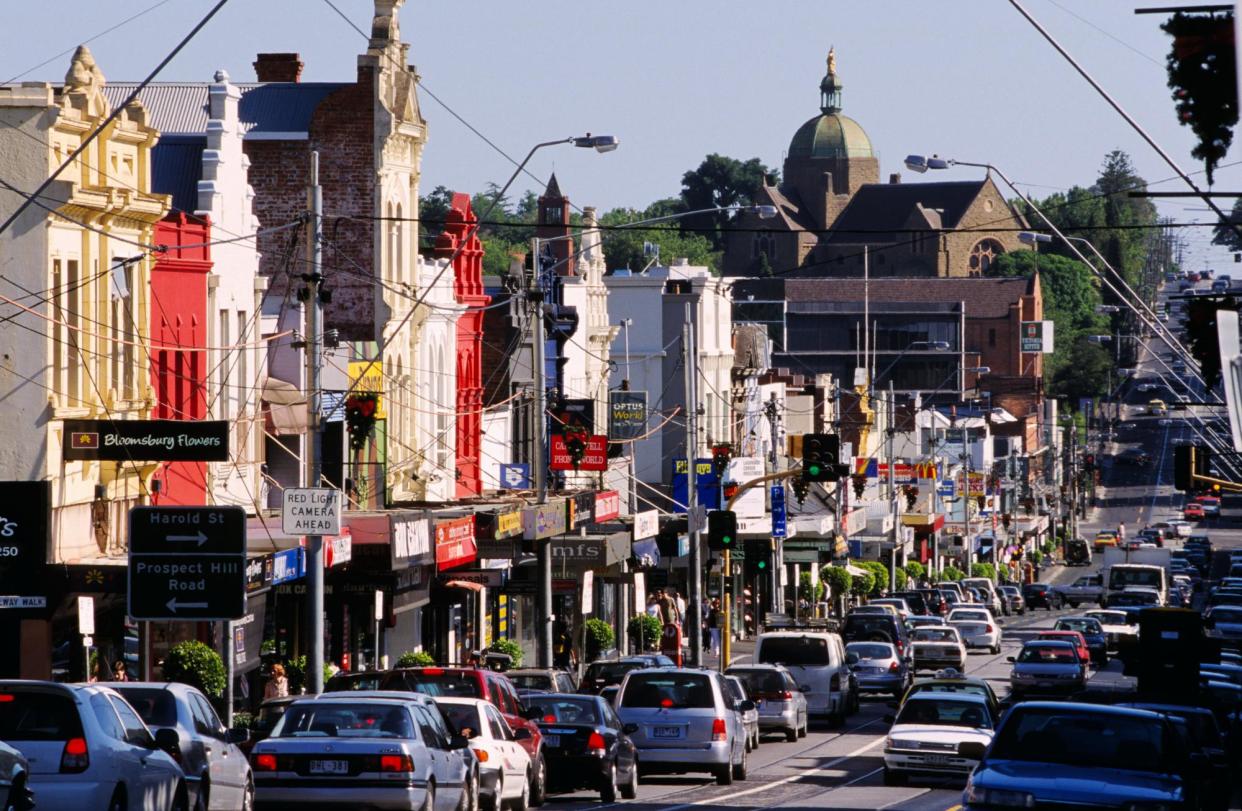Nimbys v Yimbys: the affluent inner Melbourne suburbs that aren’t pulling their weight on housing

They’re close to the city, public transport, schools and parks – and Melbourne’s leafy eastern suburbs should be shouldering the burden when it comes to new housing, according to a new report.
The report, by housing advocacy group Yimby Melbourne and published on Thursday, recommends introducing enforceable housing targets for the 19 local governments in inner Melbourne, as well as an overhaul of restrictive zoning rules.
It identifies Boroondara as the most in-demand local government area (LGA) with capacity for growth, and suggests it should have the highest target – 4,900 new homes in the next year.
Banyule, in the north-east, follows with a suggested target of 3,300 homes, and then Whitehorse, which neighbours Boroondara, with 3,000.
Overall, the report suggests 40,000 new homes should be built in inner Melbourne in 2024-25 – amounting to half of the Victorian government’s ambitious target for the state.
A few kilometres east of the CBD, Boroondara takes in affluent suburbs such as Balwyn, Camberwell, Canterbury, Hawthorn, Kew and Surrey Hills.
But census data shows it’s growing at a much slower rate than the rest of Melbourne, and is home to a lower proportion of young children and people aged in their 30s.
Yimby Melbourne’s lead organiser, Jonathan O’Brien, said this was largely due to a “nimby local council” and community resistance to high-density housing.
Related: Can millennials unscrew themselves? Part 5 – podcast
“Boroondara has not been pulling their weight for decades and our modelling recognises that,” O’Brien said.
“An area that’s made up of empty nesters is not an area that’s going to be sustainable for long.”
The report found Boroondara was “locked up” by neighbourhood residential zoning, which covers more than 90% of the LGA and limits development to 9m, or two-storeys. A third (32%) of the LGA is also subject to heritage controls.
“Land speculators are happy because they can more easily buy up the lion’s share of developable plots, while rich nimbys are also happy because their assets are protected,” the report said of restrictive zoning.
To counter this, Yimby Melbourne recommends scrapping the zone in favour of a three-storey height limit.
It said residential areas with a three-storey height limit should also be “upzoned” to four-storeys, while all low-density residential within 1km of train stations and 500m of tram stops should also be rezoned to allow for six-storey developments.
New South Wales has moved towards a similar rezoning near several train stations.
But a spokesperson for the Boroondara council said it did not support targets, describing them as “window dressing which hides the real reasons housing is not being built”.
They said this included the cost-of-living crisis, high interest rates and building materials and labour shortages.
According to Yimby Melbourne’s report, upzoning would open up 781,956 properties to development across the city, creating the potential for more than 11m new homes. However, the report makes clear it doesn’t expect development to occur on every site.
The move has been welcomed by Brendan Coates, the Grattan Institute’s economic policy program director, who said restrictive zoning was the “biggest barrier” to boosting housing supply in Melbourne
“The core problem when it comes to housing in Melbourne, is that in a lot of the most attractive areas – where people most want to live, with the best transport infrastructure and other urban amenities – it is very hard, if not impossible, to build more housing,” Coates said.
“Boroondara is ground zero for that.”
He said in 2016 Auckland embarked on a radical plan to upzone 75% of residential land, which tripled the city’s dwelling capacity, led to a surge in new construction and spared the region from ballooning house prices and rents.
Meanwhile, Boroondara council described the proposal to rezone areas near train stations and tram stops as “fundamentally flawed”.
“This scorched-earth approach to planning fails to recognise fundamental obligations in planning legislation to consider heritage and the amenity of our cities,” it said.
“More importantly, proposing such a policy without any detailed analysis of the impact on infrastructure such as schools, hospitals, public open space, sewer systems, drainage capacity and public transport capacity is simplistic.”
Peter Tulip, the chief economist at the Centre for Independent Studies, said the Yimby Melbourne report was “more formidable” and “impressive” than a similar one he authored in 2023, which recommended new housing targets for the affluent inner and eastern suburbs in NSW.
“Whether we’re talking about Sydney or Melbourne, the problem is the same. People would like to live closer into the city, so they can get to work in half an hour instead of spending hours in the car,” Tulip said.
“But the people occupying this real estate, they’ve essentially said, ‘No.’ They don’t wish to share it with renters and apartment dwellers and they use the zoning system to keep them away.
“They’re pulling up the ladder behind them and locking everybody else out.”
To determine its targets, Yimby Melbourne considered demand, house prices and rents, development costs and proximity to amenities. Already high-density LGAs were set lower targets.
The targets were also coupled with recommended “carrot and stick incentives” that could include extra funding for councils who meet their targets, and the payment of a “housing remedy” for those who fail to do so for three consecutive years.
The Victorian government has been preparing to release its own draft housing targets for councils at the end of the month for consultation.
The planning minister, Sonya Kilkenny, said the government was working with councils to “build more homes in the areas where people want to live – close to jobs, transport and essential services”.
“The status quo is not an option,” she said. “We’re pulling every lever we can to unlock more supply.”
This work is in addition to the 10 established suburbs earmarked for 60,000 new homes, which includes Camberwell Junction, within the Boroondara LGA.


